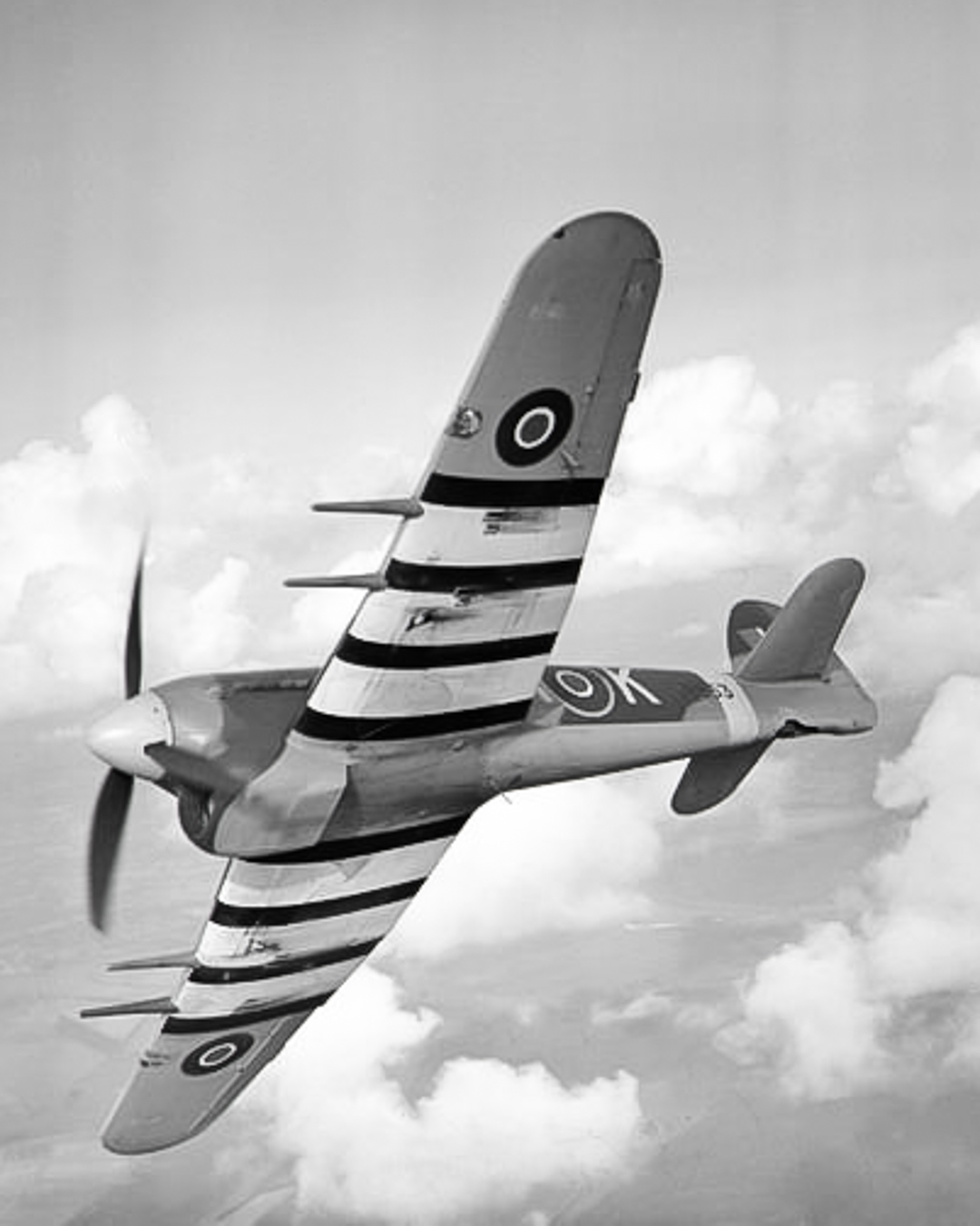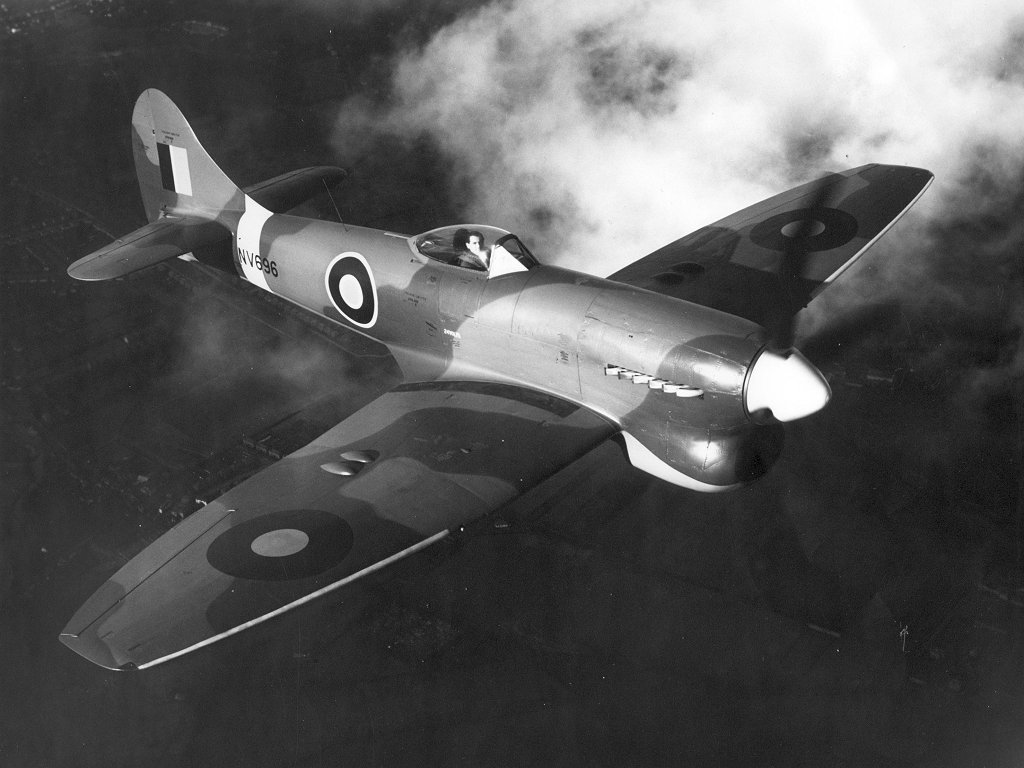

The F.Mk II model would be powered by the Bristol Centaurus engine producing an astounding 2,520 horsepower while the F.Mk V would be powered by the 2,180 horsepower Napier Sabre II series engine and the F.Mk VI fitted with the Napier Sabre V of 2,340 horsepower. Five initial versions of the Tempest were conceived, though only three of these would ever see production in the forms of the Tempest F.Mk II, Tempest F.Mk.V and Tempest F.Mk VI fighter marks. The new wing was designed to solve the high-altitude performance deficiencies of the original Typhoon series and create a truly dedicated - and this time, successful - attempt at an interceptor. The Tempest series differed from the Typhoon by sporting a longer fuselage and an all-new thin-section elliptical laminar flow low-mounted monoplane wing. These twin models were to also suffer unfortunate cancellation, giving rise to the first real production model to enter service in the form of the F.Mk V with its Napier Sabre II series engine. Once again, delays in engine production delayed this version and attention was moved to Tempest F.Mk.III and Tempest F.Mk IV models with their Rolls-Royce Griffon engines. The Tempest F.Mk II - with its Bristol Centaurus engine - was given the go-ahead instead. However, due to delays of the intended Napier Sabre IV engine, the order was inevitably cancelled. The prototype Tempest aircraft achieved first flight on September 2nd, 1942 with success and, as a result, some 400 models in the Tempest I series were placed on order. The physical and internal changes in this new design, however, were so numerous that the series was redesignated as the "Tempest". The design was accepted as the "Typhoon II" and contracted through Hawker as two prototypes for review.

Improvements in fuel storage, a new wing and a redesigned cockpit were all contributing factors in the new design and ended up becoming the glaring deficiencies inherent in the original Typhoon model. The Hawker design team set about to work on the failings of the Typhoon design and submitted a reworked model as Hawker P.1012 to the British Air Ministry in response to its Specification F.10/41. The Tempest achieved equal success as a ground-attack fighter-bomber but really shined in interception against the dreaded wave of V-1 flying bombs ravaging England. The Tempest began as the "Typhoon II" but featured so many new changes to the aircraft that it was redesignated into its own "Tempest" series classification.

Both aircraft made a significant impact on the victory by the Allies in WW2, although their low level ground attack missions were extremely hazardous, and resulted in high pilot losses.The Hawker Tempest originally appeared as an improved Hawker Typhoon, the war-winning aircraft that effectively failed in its intended role as an interceptor but went on to star as a low-level fighter-bomber.

The much improved Tempest used the same engine and basic fuselage with thinner lamina flow wings, giving improved performance at altitude, and allowing the destruction of the V1s at low altitude. Whereas the Hurricane had been developed in peacetime, the Typhoon was designed in wartime, when the urgency of the programme caused the development of both the airframe and engine to be accelerated, resulting in teething troubles not being fully solved when the aircraft entered service with the RAF.
#Hawker tempest skin
The Hawker design team lead by Sydney Camm created the all-metal stressed skin structure Typhoon powered by the revolutionary Napier Sabre engine. With the technology of the Hurricane being at the end of the biplane combat aircraft era, there was an urgent requirement for a modern fighter with a capability ahead of the anticipated German fighter development for the Luftwaffe.


 0 kommentar(er)
0 kommentar(er)
